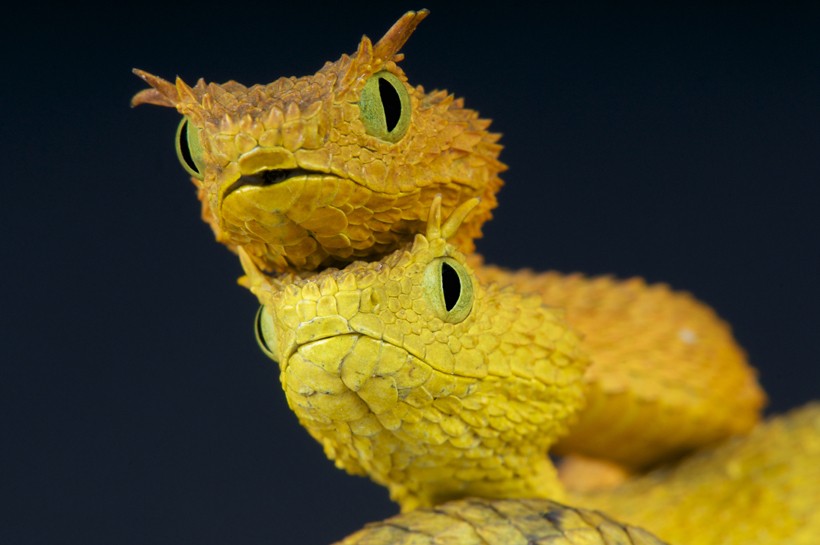Nature’s remarkable adaptations never cease to amaze, and among the most fascinating is the camouflage technique perfected by certain snake species. In the dense forests across parts of Asia, Africa, and the Americas, there exists an extraordinary reptile that has evolved to mimic the patterns of tree bark so perfectly that it becomes virtually invisible to both predators and prey. This remarkable evolutionary achievement represents one of nature’s most sophisticated examples of cryptic coloration. The ability to blend seamlessly with tree bark isn’t merely a superficial resemblance—it involves complex pattern matching, behavioral adaptations, and evolutionary refinement over millions of years. Let’s explore the fascinating world of bark-mimicking snakes and discover how these masters of disguise have perfected the art of invisibility.
The Masters of Bark Mimicry
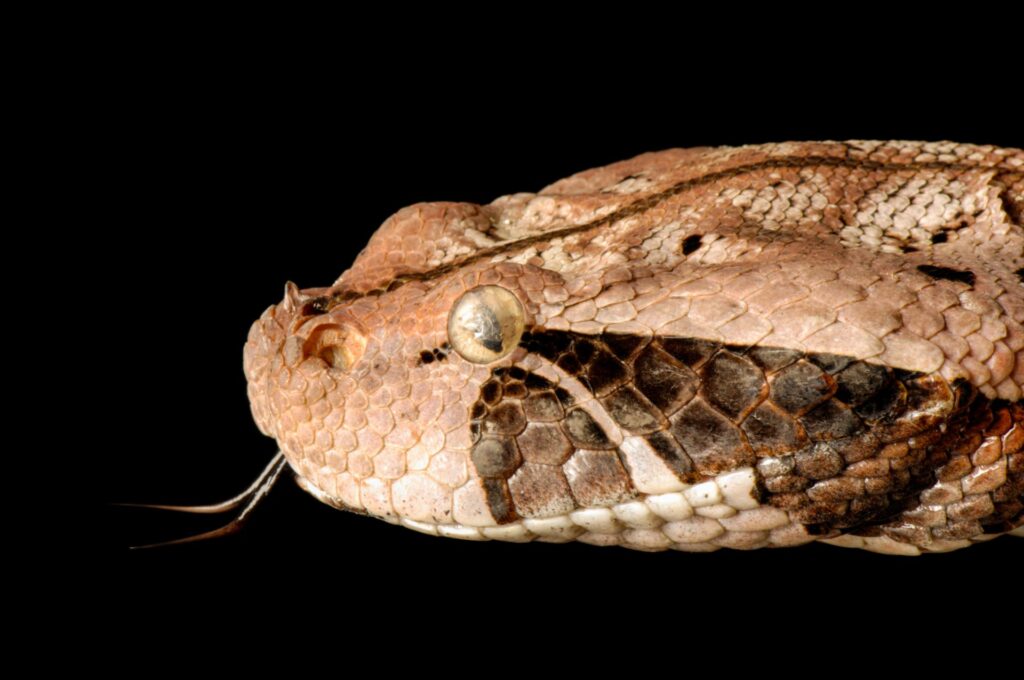
Several snake species have evolved to mimic tree bark, but none perhaps as effectively as the Gaboon viper (Bitis gabonica) and certain species of pit vipers like the Eyelash viper (Bothriechis schlegelii). These reptiles don’t simply match the color of bark—they replicate its intricate patterns, textures, and even the appearance of moss and lichen growth. The Gaboon viper, native to the forests of sub-Saharan Africa, showcases one of the most elaborate camouflage patterns in the snake world, with complex geometric designs that break up its outline when resting against a tree. When motionless, even experienced herpetologists have been known to walk right past these snakes despite actively searching for them. This remarkable camouflage serves dual purposes: it helps the snake avoid detection by predators like eagles and mongooses while simultaneously allowing it to ambush prey with deadly efficiency.
Evolutionary Development of Bark Patterns
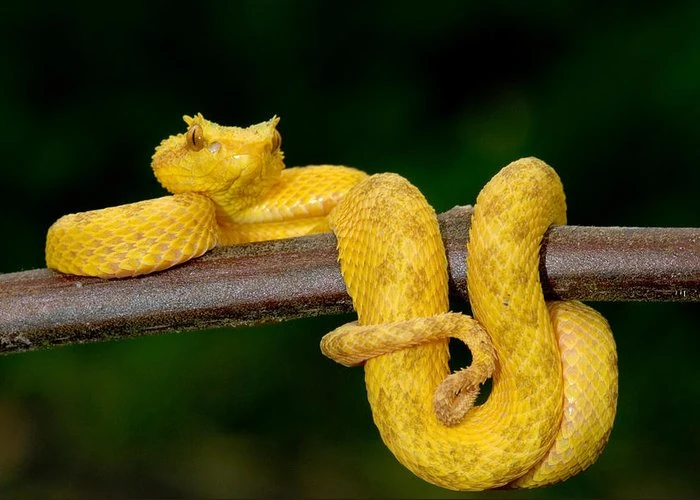
The evolution of bark-mimicking patterns in snakes represents a textbook example of natural selection at work over millions of years. Snakes that possessed coloration or patterns that even slightly resembled their surroundings had better survival rates, and over countless generations, these traits became more refined and specialized. The process, called cryptic selection or disruptive coloration, has resulted in patterns that not only match tree bark in color but also in texture and dimensional appearance. What makes this adaptation particularly fascinating is that it evolved independently in multiple snake lineages across different continents, demonstrating convergent evolution. Genetic studies have revealed complex mechanisms controlling scale pigmentation that allow for the intricate patterning necessary to create this convincing disguise. The precision of these adaptations suggests strong selective pressure, highlighting the vital importance of camouflage in snake survival strategies.
The Rhino Viper’s Exceptional Mimicry
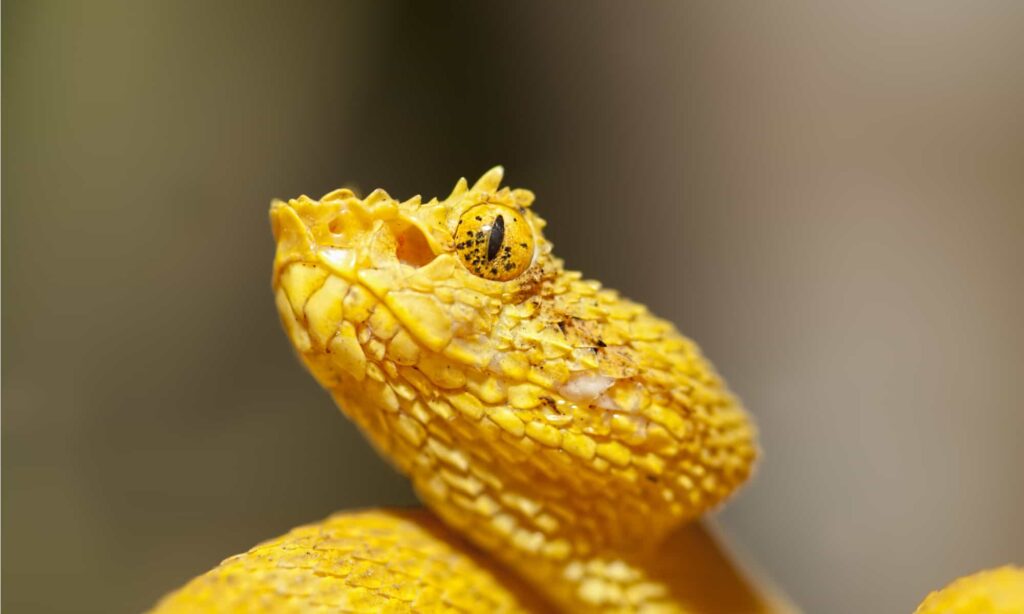
The Rhinoceros Viper (Bitis nasicornis), a close relative of the Gaboon viper, demonstrates perhaps the most striking example of bark mimicry in the snake world. Its body features a series of blue-black geometric patterns bordered by vivid blues and purples, set against a background of earth tones that perfectly mimic the dappled light and shadow patterns found on forest floors and tree trunks. The scales of the Rhino Viper have evolved to create a three-dimensional texture that enhances the illusion, making the snake appear less like a smooth reptile and more like rough bark with lichens and fungi. What makes this camouflage particularly effective is how it works from multiple viewing angles and distances, breaking up the snake’s silhouette even when seen from above by predatory birds. These vipers will often position themselves strategically on trees where their patterns best match the surrounding bark, showing a remarkable awareness of their own camouflage effectiveness.
Asian Tree Vipers and Their Bark Adaptations
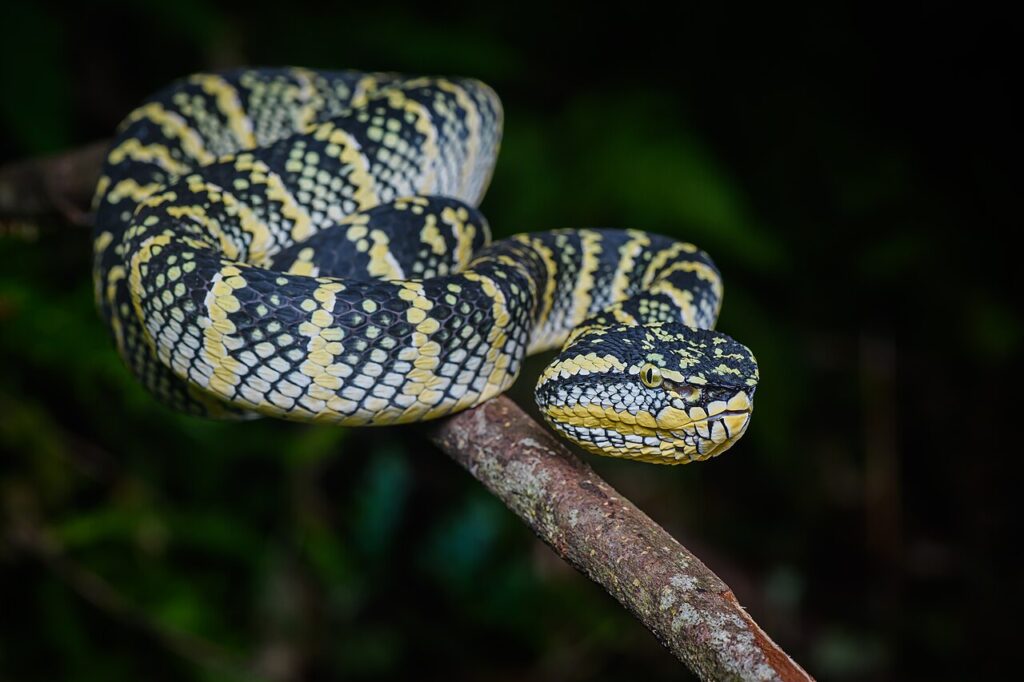
Throughout the forests of Southeast Asia, various species of tree vipers have developed their own versions of bark mimicry, often with regional specializations that match local tree species. The Wagler’s pit viper (Tropidolaemus wagleri) exhibits remarkable color variations that can include mottled patterns of browns, grays, and greens that blend perfectly with the trees of its habitat. Unlike some other bark-mimicking snakes, these Asian specialists often incorporate greens and even blues into their disguise to match the moss-covered trees of humid tropical forests. The Chinese tree viper (Trimeresurus stejnegeri) has evolved scales with ridged textures that mimic not just the visual pattern of bark but also its tactile characteristics. These Asian tree vipers exemplify how camouflage adaptations can be highly specialized to specific ecological niches, with populations sometimes developing color morphs that match the predominant tree species in their immediate vicinity.
Behavioral Adaptations That Enhance Camouflage
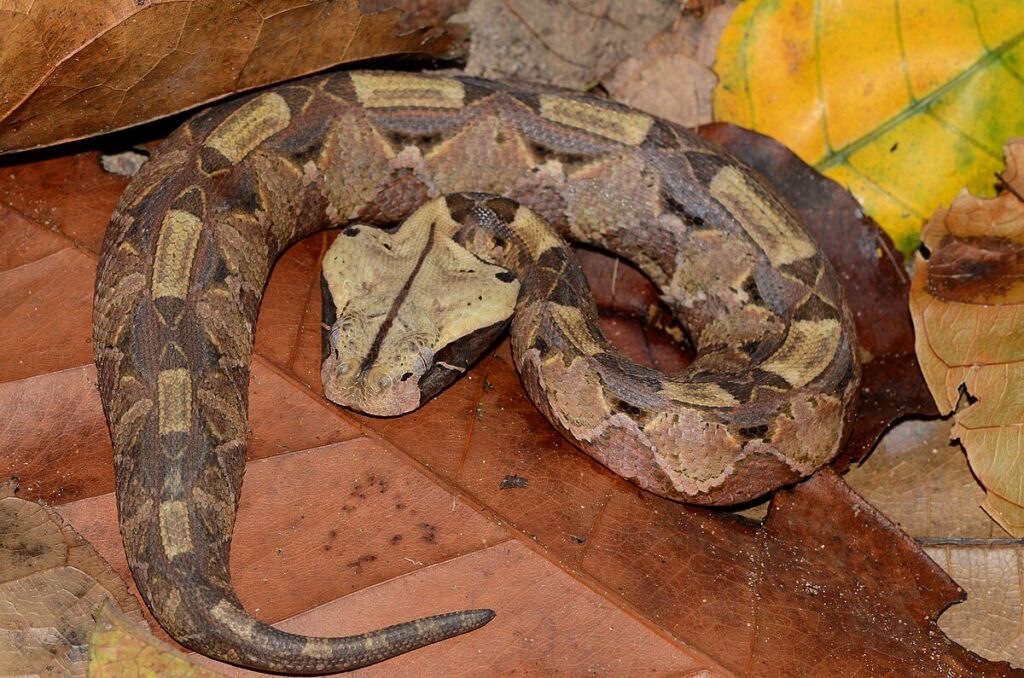
The effectiveness of bark mimicry in snakes isn’t limited to their coloration and patterns—these reptiles have also evolved specific behaviors that enhance their disguise. Many bark-mimicking species will remain perfectly motionless for days at a time, sometimes in awkward positions that better match the contours of branches or tree trunks. Species like the Eyelash Viper will strategically position themselves along branches where their body pattern best matches the bark texture, showing an intuitive understanding of their own camouflage effectiveness. Some species have developed a swaying behavior where they mimic a branch moving in the breeze, further confusing potential predators or prey. Perhaps most impressively, several bark-mimicking snakes have learned to orient their bodies to align their patterns with the vertical striations found in tree bark, demonstrating that their camouflage strategy involves active decision-making rather than passive resemblance.
The Ethiopian Mountain Viper’s Specialized Disguise
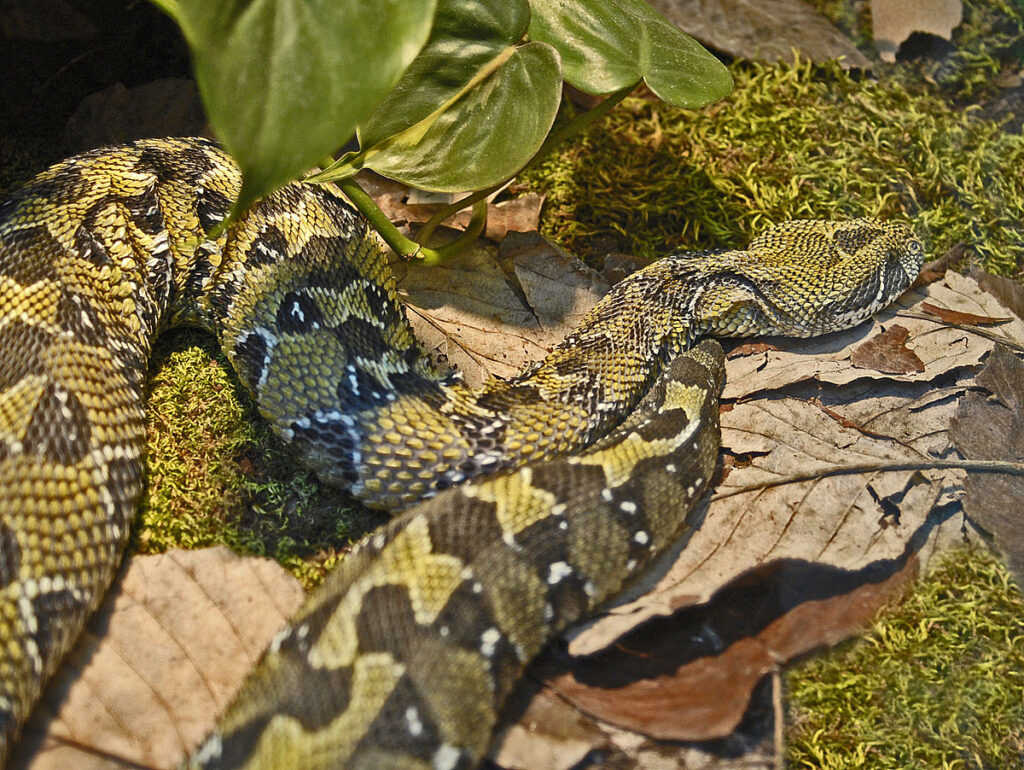
In the high-altitude forests of Ethiopia, the Ethiopian Mountain Viper (Bitis parviocula) has developed one of the most specialized bark disguises in the snake world. This rare and little-studied species possesses a pattern that specifically mimics the bark of high-altitude conifers and juniper trees found in its restricted habitat. The viper’s scales create a three-dimensional texture that replicates not just the color but the physical structure of peeling bark sections. What makes this adaptation particularly impressive is how specifically it matches the endemic tree species of the Ethiopian highlands, suggesting a long co-evolutionary history between these vipers and their forest environment. Research indicates that these vipers will selectively choose resting positions on trees that best match their particular pattern, avoiding trees where they would be more visible. This level of specialization has made the Ethiopian Mountain Viper extremely difficult to study in the wild, with some scientific expeditions failing to locate specimens despite knowing their approximate location.
How Bark Mimicry Affects Hunting Strategies

The exceptional camouflage abilities of bark-mimicking snakes have profoundly shaped their hunting techniques, resulting in a strategy known as ambush predation. Unlike active hunters that pursue prey, these snakes have evolved to become masters of patience, sometimes remaining motionless for weeks while waiting for suitable prey to come within striking distance. Their hunting success depends entirely on not being detected, making their bark disguise central to their survival. Species like the Gaboon viper have developed exceptionally long fangs—the longest of any snake—which allow them to strike prey from a stationary position without having to move their concealed body. Research using high-speed cameras has revealed that some bark-mimicking vipers can accelerate their strike from absolute stillness to maximum velocity in under 0.2 seconds, giving prey animals virtually no chance to detect the danger. The integration of physical camouflage with specialized hunting behavior represents one of the most sophisticated predatory adaptations in the reptile world.
The Scientific Study of Snake Camouflage
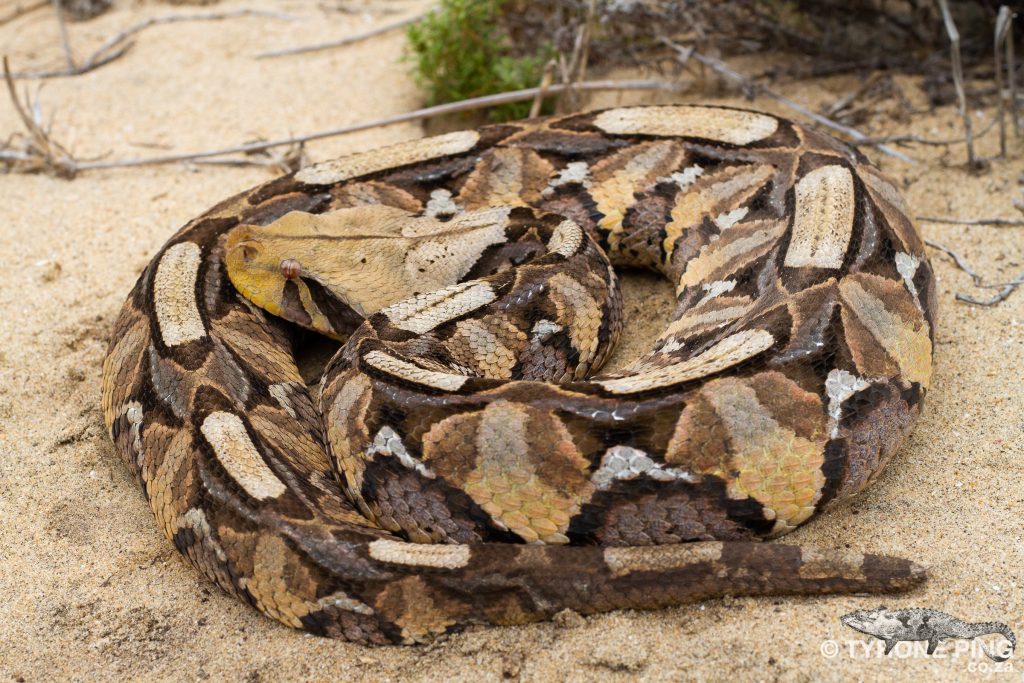
Scientists studying bark-mimicking snakes face unique challenges precisely because these animals are so difficult to detect. Research often relies on radio telemetry, where surgically implanted transmitters allow researchers to track individual snakes through dense forest habitats. Specialized photography techniques using ultraviolet and infrared imaging have revealed aspects of snake patterns invisible to the human eye but potentially visible to prey species with different visual capabilities. Recent advances in pattern recognition algorithms have allowed researchers to quantify exactly how closely snake patterns match their preferred backgrounds, confirming what human observers have long suspected: these snakes possess some of the most effective camouflage in the animal kingdom. Comparative studies examining the visual systems of both the snakes’ predators and prey species have helped scientists understand the evolutionary pressures that shaped these remarkable adaptations. Laboratory experiments involving controlled backgrounds have demonstrated that these snakes can actively select resting positions that optimize their camouflage effectiveness.
Threats to Bark-Mimicking Snake Species
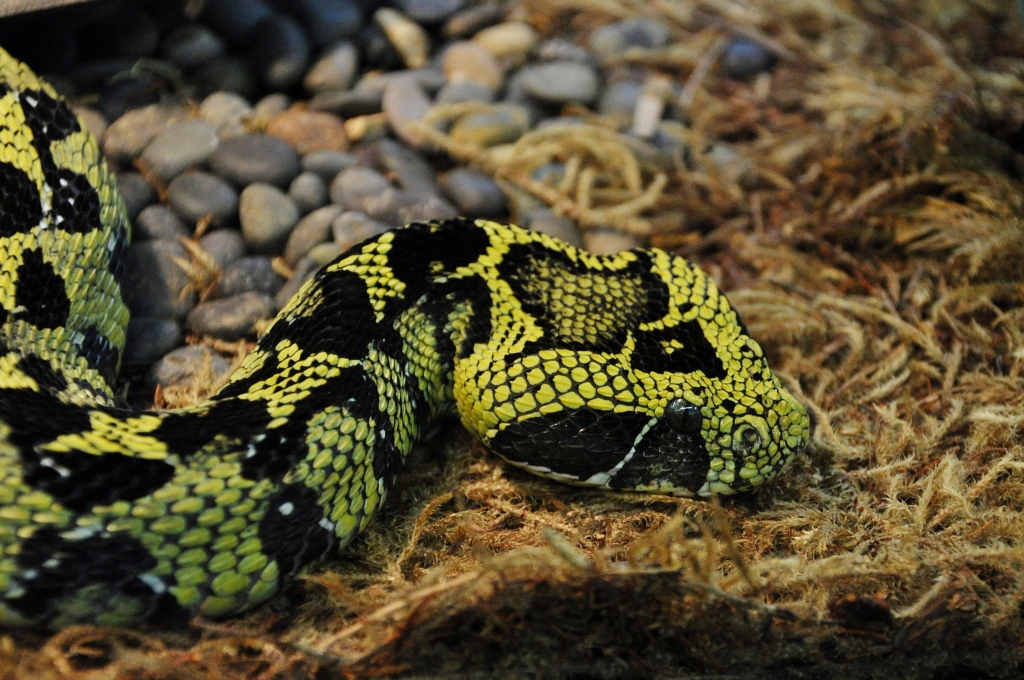
Despite their remarkable adaptations, many bark-mimicking snake species face significant conservation challenges in the modern world. Habitat destruction, particularly deforestation, represents the most serious threat, as these highly specialized reptiles cannot simply relocate to different environments. Their camouflage, evolved over millions of years to match specific forest types, becomes useless in altered habitats. Climate change poses another serious threat, as it affects the phenology of forests, potentially creating mismatches between snake appearance and their increasingly altered habitats. Additionally, many of these species face persecution from humans due to fear and misunderstanding, with venomous species like the Gaboon viper often killed on sight despite their generally non-aggressive nature. The illegal wildlife trade further threatens populations, as the striking patterns that evolved for camouflage ironically make these snakes desirable in the exotic pet trade, leading to unsustainable collection from the wild.
Kenyan Bush Viper: A Living Tree Branch
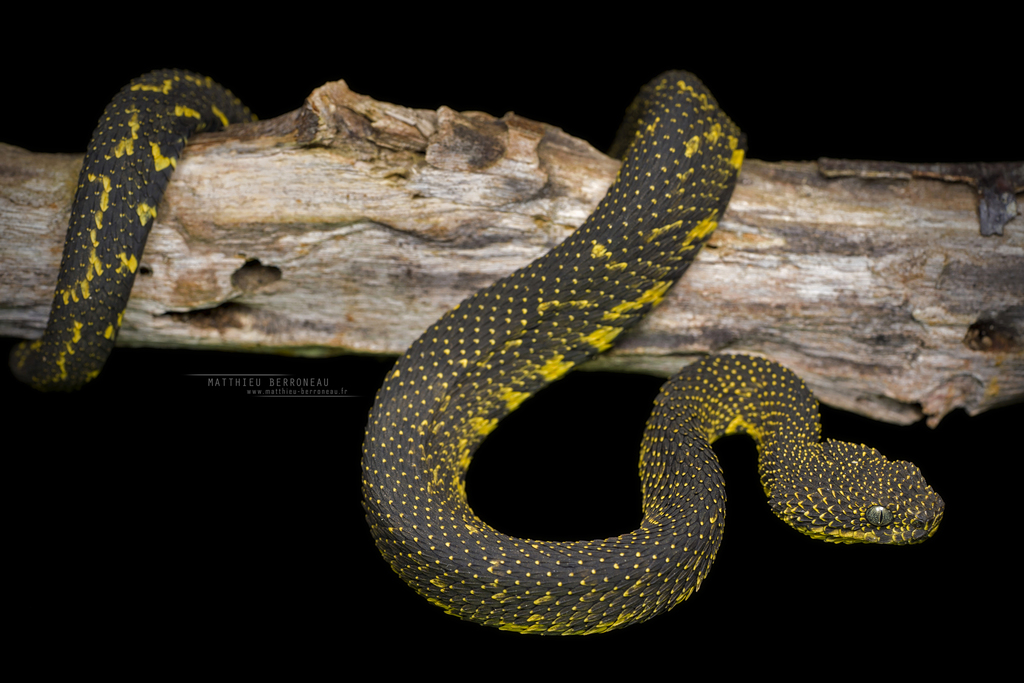
The Kenyan Bush Viper (Atheris desaixi) represents perhaps the most specialized form of tree mimicry among all snakes, with an appearance so branch-like that it transcends simple camouflage. This East African species possesses heavily keeled scales that create a texture remarkably similar to rough tree bark or lichen-covered branches. The viper’s body coloration includes mottled greens, browns, and occasional hints of blue or yellow that perfectly match the dappled light conditions of its forest habitat. Unlike some other bark-mimicking species, the Kenyan Bush Viper takes its disguise further by often positioning its body in zigzag patterns that mimic the natural growth patterns of small branches. Their eyes, which might otherwise give away their presence, blend seamlessly with their overall pattern through specialized scale arrangements that break up the distinctive snake eye silhouette. Local researchers report that even when their exact location is known, these vipers can be nearly impossible to spot without specialized training, making them among the most accomplished disguise artists in the reptile world.
The Role of Scale Structure in Creating Bark Patterns
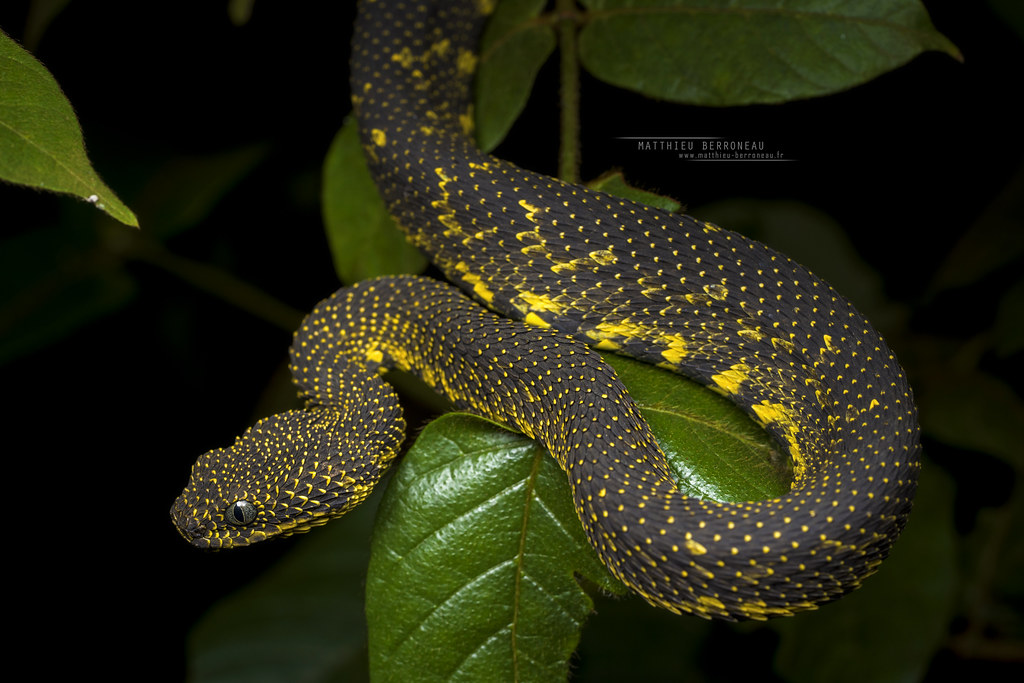
The convincing bark mimicry achieved by certain snake species isn’t just a matter of color—the physical structure of their scales plays a crucial role in creating the illusion. Many bark-mimicking species have evolved specialized keeled scales that stand up slightly from the body, creating micro-shadows and texture that replicate the three-dimensional quality of rough tree bark. Electron microscopy studies have revealed that some species have nanoscale structures on their scales that manipulate light in complex ways, creating visual effects that enhance their camouflage under various lighting conditions. The arrangement of scales also contributes to the disguise, with overlapping patterns that create the impression of bark plates or peeling sections. In species like the Gaboon viper, the scales around the head region are arranged in ways that break up the distinctive snake head silhouette, one of the visual cues that predators and humans use to identify snakes. This multifaceted approach to camouflage, involving both pigmentation and physical structure, represents one of the most comprehensive disguise systems in the animal kingdom.
Geographic Variations in Bark Mimicry
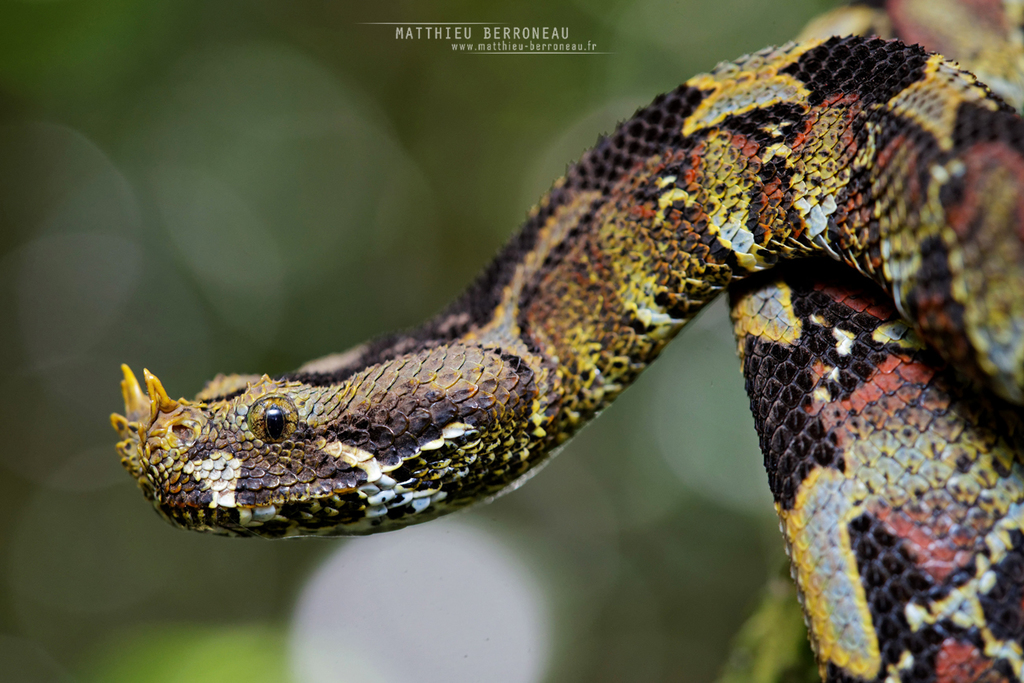
The evolution of bark mimicry in snakes shows fascinating geographic patterns, with species adapting to match the specific trees in their native habitats. In the rainforests of Central America, species like the Eyelash Viper have developed patterns that match the moss-covered trees characteristic of high-humidity environments. In contrast, African vipers like the Gaboon and Rhinoceros vipers have patterns that correspond to the more patchwork appearance of savanna and woodland trees. Researchers have documented cases where snake populations separated by just a few miles show distinct pattern variations that correspond to differences in local tree species, suggesting rapid adaptive evolution. In mountainous regions, altitudinal variations in snake patterns have been observed, with individuals living at different elevations displaying coloration that matches the changing tree bark characteristics across the elevation gradient. These geographic variations provide valuable insights for evolutionary biologists studying the rate and mechanisms of adaptive evolution, as they represent natural experiments in how quickly camouflage can evolve in response to specific environmental conditions.
The Future of Bark-Mimicking Snakes in a Changing World
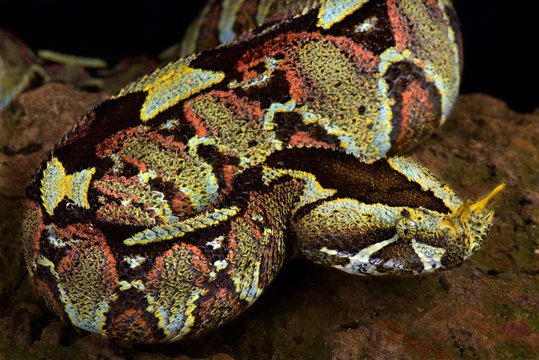
The remarkable evolutionary adaptations that allow snakes to mimic tree bark with such precision may face unprecedented challenges in the coming decades. As climate change alters forest ecosystems and human development fragments habitats, these highly specialized reptiles must either adapt or face population declines. Conservation biologists are particularly concerned about species with very specific pattern adaptations, as these may represent millions of years of evolutionary refinement that cannot rapidly adjust to new conditions. Some researchers are using climate modeling to predict how forest compositions might change in snake habitats, attempting to identify populations at highest risk of camouflage mismatch. Conservation efforts increasingly focus on preserving not just the snakes themselves but the specific forest types they have evolved to match, recognizing that these reptiles represent complex evolutionary relationships with their environments. Advances in genetic techniques may eventually allow scientists to understand the genetic basis of bark pattern development, potentially providing insights into both evolutionary biology and conservation approaches for these remarkable reptiles.
The snakes that have evolved to mimic tree bark represent one of nature’s most sophisticated examples of camouflage. Through millions of years of natural selection, these reptiles have developed not just coloration but complex patterns, scale structures, and behaviors that create a nearly perfect disguise. From the Gaboon viper of Africa to the various tree vipers of Asia, these remarkable adaptations showcase the power of evolutionary processes to create solutions that blur the line between animal and environment. As we continue to study these fascinating creatures, they remind us of the intricate relationships between species and their habitats, and the importance of preserving both to maintain the extraordinary biodiversity our planet has developed. In the silent stillness of a snake perfectly disguised against a tree trunk, we find one of nature’s most eloquent expressions of adaptation and survival.

